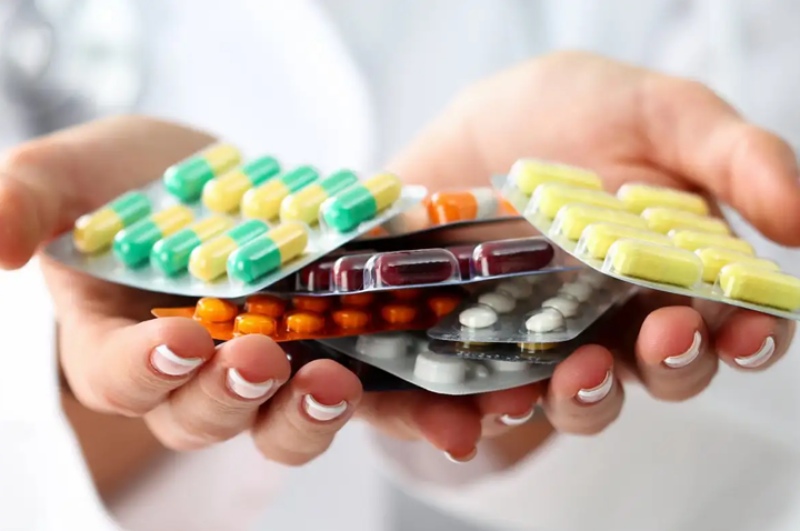The journey of life-saving drugs is a fascinating and complex process that involves scientific discovery, rigorous testing, regulatory approvals, and global distribution. These drugs, which can make the difference between life and death for millions of people, undergo a meticulous journey from the lab to the patient. This journey is marked by innovation, collaboration, and a relentless pursuit of better health outcomes. Here’s a detailed look at the various stages and key players involved in this critical process.
Discovery and Development
The journey begins with scientific discovery, often rooted in understanding disease mechanisms at the molecular and cellular levels. Researchers in universities, pharmaceutical companies, and biotech firms explore new compounds and biological pathways to identify potential drug candidates. This stage involves:
- Basic Research: Scientists conduct basic research to understand the underlying causes of diseases. This includes studying the genetic, molecular, and cellular mechanisms involved in disease progression. A Lapatinib exporter is a company that specializes in shipping the cancer treatment drug Lapatinib to various countries.
- Target Identification and Validation: Researchers identify specific targets (such as proteins or genes) that play a crucial role in disease. These targets are validated through experiments to confirm their potential for therapeutic intervention.
- Drug Discovery: High-throughput screening and computational methods are used to identify compounds that interact with the validated targets. This process may involve synthesizing new molecules or repurposing existing ones.
- Preclinical Testing: Promising compounds undergo preclinical testing in vitro (in cell cultures) and in vivo (in animal models) to assess their safety, efficacy, and pharmacokinetics. This stage helps determine the optimal dosage and delivery method.
Clinical Trials
Once a drug candidate shows potential in preclinical testing, it moves into the clinical trial phase, which is conducted in three main phases:
- Phase I Trials: The primary goal of Phase I trials is to evaluate the safety and tolerability of the drug in a small group of healthy volunteers or patients. Researchers determine the appropriate dosage range and identify any adverse effects.
- Phase II Trials: In Phase II trials, the drug is tested on a larger group of patients to assess its efficacy and further evaluate its safety. This phase helps determine the optimal dose and treatment regimen.
- Phase III Trials: Phase III trials involve a larger and more diverse patient population. These trials are designed to confirm the drug’s efficacy, monitor side effects, and compare it to standard treatments. Successful completion of Phase III trials is essential for regulatory approval.
Visit here: Specialitymedz
Regulatory Approval
Obtaining regulatory approval is a critical milestone in the journey of life-saving drugs. Regulatory agencies, such as the U.S. Food and Drug Administration (FDA), the European Medicines Agency (EMA), and other national authorities, evaluate the results of clinical trials to ensure the drug is safe and effective for its intended use. This process involves:
- Submission of a New Drug Application (NDA): Pharmaceutical companies submit a comprehensive NDA or similar application, including data from preclinical and clinical studies, manufacturing information, and proposed labeling.
- Review and Evaluation: Regulatory agencies review the application, conduct inspections of manufacturing facilities, and may request additional data or clarification.
- Approval and Post-Marketing Surveillance: Once approved, the drug can be marketed and prescribed to patients. Post-marketing surveillance continues to monitor the drug’s safety and effectiveness in the general population.
Manufacturing and Distribution
Manufacturing life-saving drugs involves complex processes to ensure quality, consistency, and scalability. Pharmaceutical manufacturers adhere to Good Manufacturing Practices (GMP) to produce drugs that meet stringent quality standards. Key steps include:
- Scale-Up and Production: The manufacturing process is scaled up from laboratory to industrial scale, ensuring that the drug can be produced in large quantities without compromising quality.
- Quality Control and Assurance: Rigorous quality control measures are implemented at every stage of production to ensure the drug’s purity, potency, and stability. Quality assurance teams oversee compliance with regulatory standards.
- Packaging and Labeling: The drug is packaged and labeled according to regulatory requirements, with clear instructions for use, dosage, and potential side effects.
- Distribution: Efficient distribution networks are established to ensure that the drug reaches healthcare providers and patients globally. Cold chain logistics may be necessary for temperature-sensitive drugs.
Access and Affordability
Ensuring access to life-saving drugs is a critical challenge, particularly in low- and middle-income countries. Efforts to improve access and affordability include:
- Generic Drugs: Once a drug’s patent expires, generic versions can be produced by other manufacturers, often at a lower cost. Generic drugs play a vital role in increasing access to essential medicines.
- Public-Private Partnerships: Collaborations between governments, non-governmental organizations (NGOs), and pharmaceutical companies can enhance drug access through subsidized pricing, donations, and innovative financing mechanisms.
- Policy and Advocacy: Advocacy efforts focus on policies that support universal health coverage, reduce regulatory barriers, and promote equitable access to life-saving drugs.
Innovation and Future Trends
The field of life-saving drugs is continuously evolving, driven by scientific and technological advancements. Key trends shaping the future include:
- Precision Medicine: Tailoring treatments to individual patients based on their genetic, molecular, and clinical profiles. Precision medicine aims to improve treatment outcomes and minimize side effects.
- Biologics and Biosimilars: The development of biologics, such as monoclonal antibodies and cell therapies, has revolutionized treatment for many diseases. Biosimilars offer more affordable alternatives to biologics.
- Digital Health: Integration of digital technologies, such as telemedicine, wearable devices, and artificial intelligence, to enhance patient care, monitor treatment adherence, and optimize clinical outcomes.
- Global Health Initiatives: International efforts to address global health challenges, such as the Global Fund to Fight AIDS, Tuberculosis, and Malaria, and the Access to COVID-19 Tools (ACT) Accelerator, play a crucial role in improving access to life-saving drugs.
Case Studies
HIV/AIDS
The development of antiretroviral therapy (ART) for HIV/AIDS is a landmark achievement in the history of life-saving drugs. In the 1980s, HIV/AIDS was a devastating and often fatal disease. The introduction of ART in the mid-1990s transformed HIV/AIDS into a manageable chronic condition, significantly reducing morbidity and mortality rates. The journey of ART highlights the importance of scientific innovation, regulatory support, and global collaboration in tackling public health crises.
Cancer
Cancer treatment has seen remarkable advancements, with the development of targeted therapies, immunotherapies, and personalized medicine. Drugs such as imatinib (Gleevec) for chronic myeloid leukemia and pembrolizumab (Keytruda) for various cancers have revolutionized treatment paradigms. These breakthroughs result from decades of research, clinical trials, and collaborations between academic institutions, pharmaceutical companies, and regulatory agencies.
COVID-19
The rapid development and deployment of COVID-19 vaccines exemplify the potential for scientific collaboration and innovation in response to global health emergencies. The unprecedented speed of vaccine development, testing, and regulatory approval was achieved through international cooperation, public-private partnerships, and significant investments in research and infrastructure. COVID-19 vaccines have saved millions of lives and highlighted the critical role of vaccines in preventing infectious diseases.
Conclusion
The journey of life-saving drugs for better health is a testament to human ingenuity, perseverance, and collaboration. From the initial discovery and development stages to regulatory approval, manufacturing, and global distribution, each step is essential in ensuring that life-saving drugs reach those in need. As scientific and technological advancements continue to shape the future of medicine, the potential for new and innovative treatments to improve health outcomes and save lives remains boundless. The ongoing commitment of researchers, healthcare professionals, policymakers, and advocates is crucial in advancing the field of life-saving drugs and ensuring that everyone, regardless of their geographical or economic circumstances, has access to these vital treatments.







